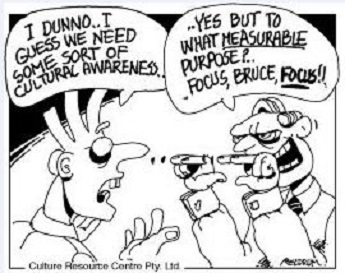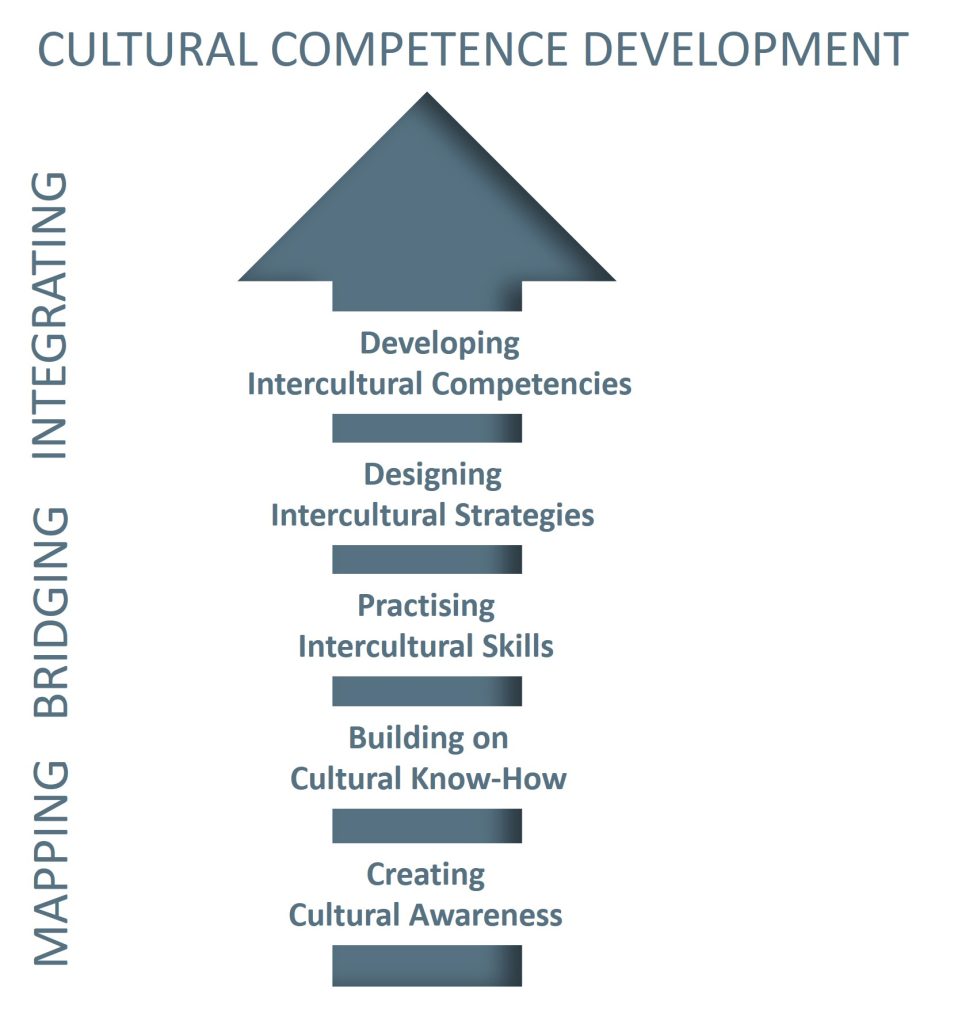Blog Culture@Work
Welcome! My name is Joost Thissen and here I like to share cultural columns and insights for those of us who are interested in culturally diverse and global workplaces.


Welcome! My name is Joost Thissen and here I like to share cultural columns and insights for those of us who are interested in culturally diverse and global workplaces.


cultural column  Email This Post
Email This Post
When Learning & Development staff are required to putting a value on intercultural training, they do not only need to offer training that works, they also need to be able to prove it to their management and CEO.
A McKinsey Quarterly survey report about the value of training programs (1) stated that of the participating organisations that were spending resources to develop highly competent employees, 90% said that ‘building capabilities’ was a top-ten priority for their organisations.
Research by Training Industry (2) however found that 50% of learning and development is wasted, as employees do not apply what they’ve learned on the job. They also found that 74% of CEOs want to see Return on Investment (ROI) on their learning and development programs, yet only 4% tracked their programs’ ROI.
When we are required to putting a value on training we should offer training interventions that work and include both soft and hard metrics to prove it. Let me apply that to the field of intercultural competence development: more popular known as intercultural training.
During the process of making the investment of intercultural training effective and measurable, organisations could follow a process by setting clear objectives with measurable metrics. This means that performance needs to be clearly defined in order to be able to putting a value on training. Questions that will assist to achieve this include:
Professionals tasked with sourcing intercultural training services, recognise that staff differ in culture, skin-colour, race, accents and/or language fluency –, but might lack the ability to analyse why staff training.
A tick-in-the-box requirement might sound like a valid enough reason when in need to show compliance, however in that case you do not have to go through the effort of measuring the value of training. This seems irrelevant as the organisation does not seem to aim to develop a particular level of competence.
Why do we source intercultural training?
Requests for intercultural training need to begin with the ‘WHY’ employees need training. Preferably, this should go beyond stating ‘breaking down cultural barriers through cultural awareness’: it needs to be much more detailed to guide future training interventions.
Think about staff who are part of culturally diverse teams, staff who need to manage multicultural teams, staff who deliver customer service to culturally diverse clients, staff who work with overseas clients or subsidairies, or staff who are expatriated to another country.
What key performance-enhancing skills and level of cultural competence development?
Next, we need to define the key performance-enhancing skills e.g., to be able to communicate effectively in culturally diverse (virtual) teams, to lead multicultural teams, to negotiate deals with international partners, to instruct and train staff from other cultures, etc.

Furthermore, we need to determine the required level of intercultural competence: creating cultural awareness (level i) is usually a starting point to explore where cultural differences come from. A next step requires building cultural know-how (level ii) to map how cultural differences impacts work behaviour. Followed by updating intercultural skills (level iii), and designing intercultural strategies (iv) to be able to bridge the cultural differences. Finally, developing the intercultural competencies (v) to integrate and manage the complexities of the impact of culture at work.
Who do we need to target?
Careful selection of people who would benefit most from skills enhancement to improve performance is also critical. Training those staff who cannot see the need of the learning objectives in their work, can actually cause disruption in training sessions and negatively impact on the learning opportunities of those who really need it.
How do we increase the ROI of intercultural training programs to enhance intercultural competence development?
How to define the hard metrics?
To measure the ROI of intercultural training, you need to pick the right metrics: gather business data from before and after the training to evaluate quantifiable factors that impact on other areas of the business e.g., staff turn-over, sick leave, team productivity/output, quality assurance, career advancement, staff and customer satisfaction and relationships. You then compare the cost of the training with the value that it provided. This gives you an indication of the value of the training to the company’s bottom line.
Challenges in health care industry
We were approached by a health care organisation working with culturally diverse staff in a culturally diverse environment: they were experiencing high staff turnover, high rates of sick leave, low employee satisfaction, and client satisfaction. Based on anecdotal feedback and recorded client complaints, cultural differences were highlighted as a key issue.
We used a Training Needs Analysis to explore specific areas of cultural challenges, concerns and experiences among staff, and management. This way we were able to identify what was missing in terms of intercultural performance-enhancing skills and competence development for both staff and management; e.g., increasing intercultural communication skills among staff, and managing the cultural complexity and enhancing conflict resolutions for management.
Specific Outcomes Defined using Metrics
Based on the identified challenges, and in cooperation with the HR department, we identified specific skills and competence levels for a number of groups (staff, professionals and management), and we defined the hard metrics to evaluate the training effectiveness. The overall training effectiveness was measured by participants’ written and verbal feedback about the received training workshops via evaluation forms, a pre-defined percentage point in the increase in employee satisfaction, and by achieving a reduction in percentages points for staff turnover, sick leave, and client complaints.
We facilitated training for 220 staff and management from one subsidiary over two months. On completion of this pilot project, all of the identified objectives were measured and successfully achieved. Interestingly, the total number of customer complaints dropped significantly and complaints related to cultural challenges were down to zero! So successful were the results that other subsidiaries of the health care organisation requested that their staff and management also completed the intercultural training.
Putting a value on intercultural training
This case was selected to illustrate that we need a few steps to be able to putting value on intercultural training: identifying the reason why training is required, defining the performance-enhancing skills and intercultural competence levels, and decide on target groups helps to ensure that training interventions are effective for the people who need the training.
Defining and measuring the hard metrics to track the ROI on training interventions also helps establishing the effectiveness of intercultural training in an objective way, and might safeguard essential future training budgets.
References
1. Phillips J, Phillips P and McLeod K, 2018 How to Show the Business Value of Training and Learning in 10 Simple Steps, Training Industry.
2. Cermak J & McGurk M, 2010, ‘Putting a value on training’, McKinsey Quarterly.
_________________________________________
Joost Thissen, Partner & Interculturalist
joost@cultureresourcecentre.com.au
cultural column  Email This Post
Email This Post